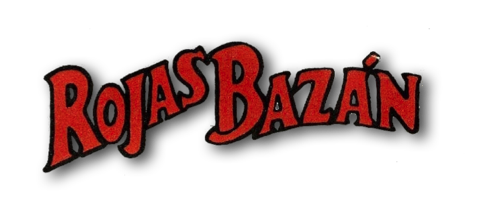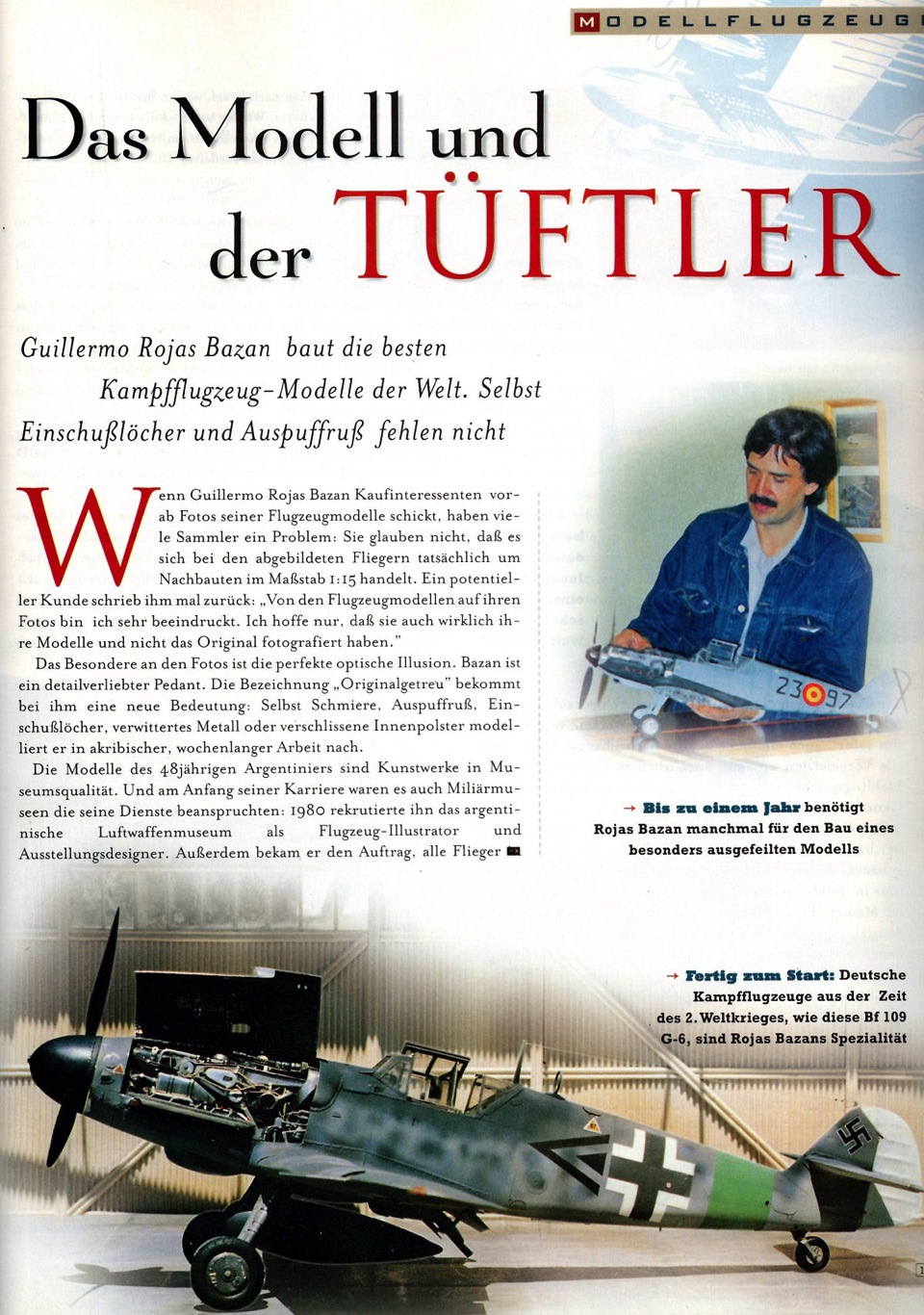
TRANSLATION OF IQ KATALOG MAGAZIN - 1997
Translation of page 1:
[Caption] Rojas Bazan sometimes takes up to a year to build a particularly sophisticated model
[Caption] Ready to start: German fighter planes from World War II, like this Bf 109 G-6, are Rojas Bazan's specialty
The model and the inventor
Guillermo Rojas Bazan builds the best fighter plane models in the world. Even bullet holes and exhaust soot are not missing
When Guillermo Rojas Bazan sends prospective customers photos of his aircraft models in advance, many collectors have a problem: they do not believe that the aircraft shown are actually 1:15 scale replicas. A potential customer wrote back to him: “I am very impressed with the aircraft models in the photos. I just hope that you really photographed the models and not the originals."
What is special about the photos is the perfect optical illusion. Bazan is a lover of detail. The term "true to the original" takes on a new meaning for him: he models even grease, exhaust soot, bullet holes, weathered metal or worn interior upholstery in meticulous, weeks-long work.
The models of the 48 year old Argentinian are museum-quality works of art. And at the beginning of his career, it was also military museums that used his services: in 1980 the Argentine Air Force museum recruited him as an aircraft illustrator and exhibition designer. He was also commissioned to recreate all the (continues below)
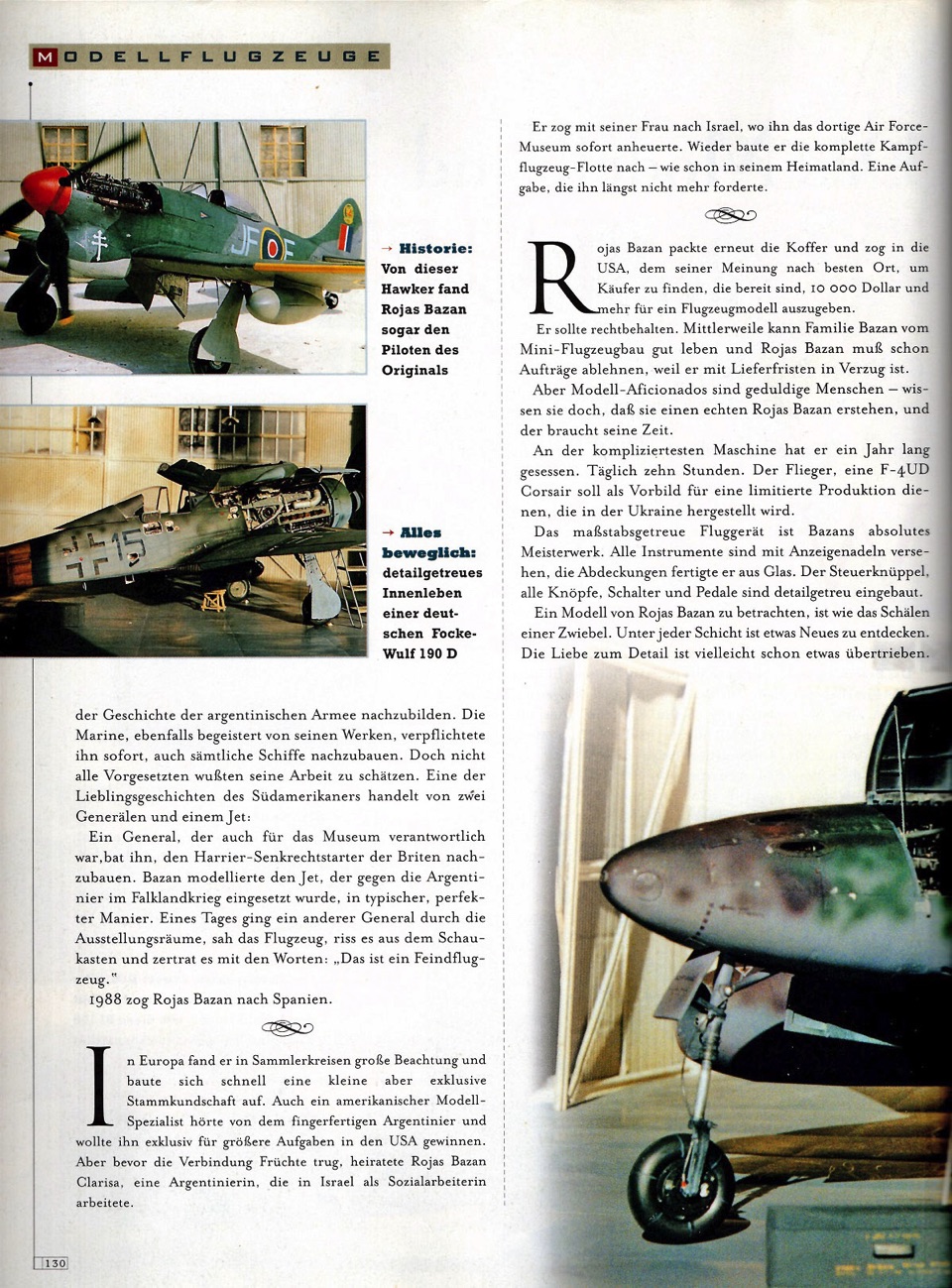
Translation of page 2:
[Caption] Original or model? In photograps, Rojas Bazan's aircraft replicas are hardly distinguishable from their prototypes
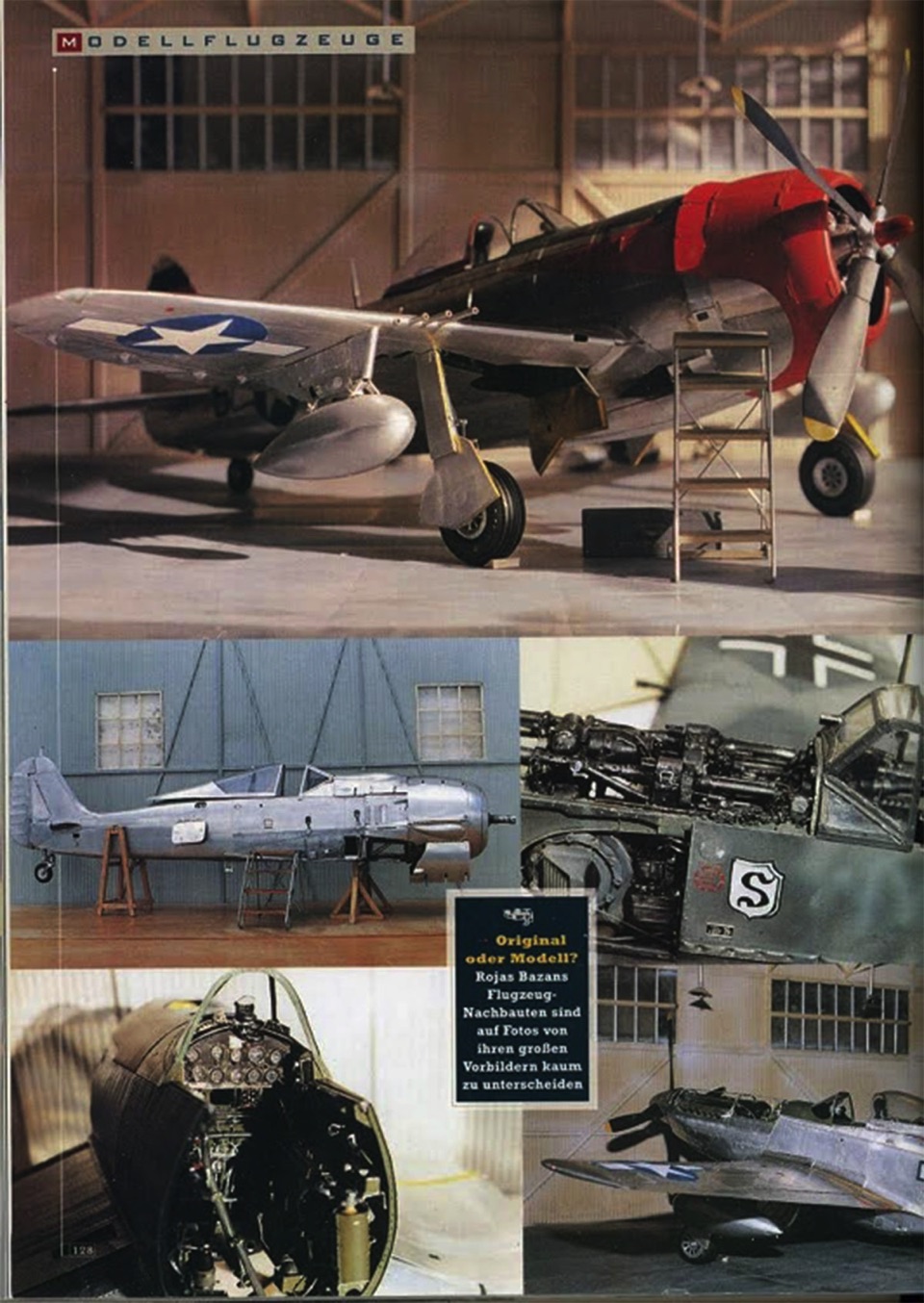
Translation of page 3:
[Caption] History: Rojas Bazan even found the pilot of the original for this Hawker model
[Caption] Everything is movable: detailed interior of a German Focke Wulf 190 D
(continues from above) planes in the history of the Argentine army. The Navy, also enthusiastic about his works, immediately obliged him to replicate all their ships. But not all superiors appreciated his work. One of the South American's favorite stories is about two generals and a jet:
A general, who was also responsible for the museum, asked him to recreate the British Harrier vertical take-off fighter. Bazan modeled the jet that was used against the Argentines in the Falklands War in a typical, perfect manner. One day, another general walked through the showrooms, saw the plane, yanked it out of the showcase, and crushed it with the words, "This is an enemy plane."
In 1988 Rojas Bazan went to Spain
In Europe he received great attention from collectors and quickly built up a small but exclusive regular clientele. An American model specialist also heard about the nimble fingered Argentine and wanted to hire him exclusively for larger projects in the USA. But before the connection bore fruit, Rojas married Bazan Clarisa, an Argentine who worked as a social worker in Israel.
He moved to Israel with his wife, where he was immediately hired by the Air Force Museum there. Again he rebuilt the entire fighter aircraft fleet - just like in his home country. A task that was no longer challenging for him.
Rojas Buzan packed his bags again and moved to the United States, which he thought was the best place to find buyers willing to spend $10,000 or more on a model airplane.
He would be right. Now, the Bazan family can make a good living from model aircraft construction and Rojas Bazan has to reject orders because he is behind schedule with delivery times.
But model aficionados are patient people - they know that they can buy a real Rojas Bazan, and it takes time.
He sat on the most complicated machine for a year. Ten hours a day. The aircraft, an F-4UD Corsair, is to serve as a model for a limited production that is manufactured in Ukraine.
This scale aircraft is Bazan's absolute masterpiece. All instruments are equipped with display needles, the covers are made of glass. The joystick, all buttons, switches and pedals are built with great attention to detail.
Looking at a Rojas Bazan model is like peeling an onion. There is something new to discover under each layer. The attention to detail is perhaps a bit exaggerated. (continues below)
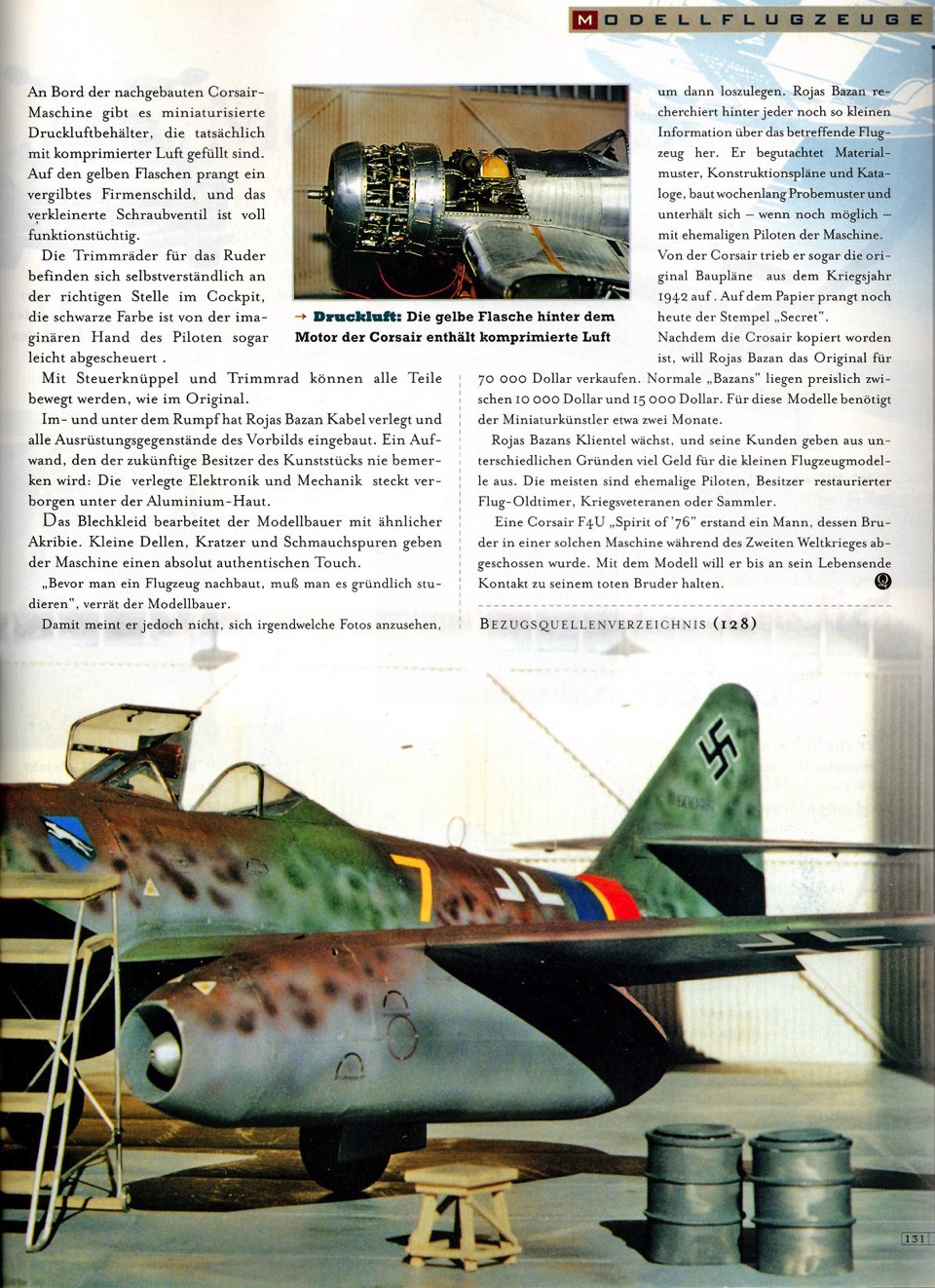
Translation of page 4:
[Caption] Compressed air: The yellow bottle behind the Corsair engine contains compressed air
(continues from above) Aboard the replica Corsair there are miniaturized compressed air tanks that are actually filled with compressed air. A yellowed company sign is emblazoned on the yellow bottles, and the reduced screw valve is fully functional.
The trim wheels for the rudder are of course in the right place in the cockpit, the black color is even slightly rubbed off by the pilot's imaginary hand.
With the joystick and trim wheel, all parts can be moved as in the original.
Rojas Bazan laid cables in and under the fuselage and installed all the equipment of the prototype. An effort that the future owner of the feat will never notice: the installed electronics and mechanics are hidden under the aluminum skin.
The model maker processes the sheet metal skin with similar meticulousness. Small dents, scratches and traces of smoke give the machine an absolutely authentic touch.
"Before you build an airplane, you have to study it carefully," reveals the model maker.
However, he doesn't mean just looking at photos. Rojas Bazan researches every little piece of information about the aircraft in question. He examines material samples, construction plans and catalogs, builds samples for weeks and talks - if possible - with former pilots of the machine. From the Corsair he even found the original blueprints from the war in 1942. The "Secret" rubber stamp is still emblazoned on the paper.
After the Corsair has been copied, Rojas Bazan plans to sell the original for $70,000. Normal "Bazans" are priced between $10,000 and $15,000. The miniature artist needs about two months for these models.
Rojas Bazan's clientele is loyal, and his customers spend a lot of money on the small aircraft models for various reasons. Most of them are former pilots, owners of restored classic aircrafts, war veterans or collectors.
A Corsair F4U "Spirit of 76" was bought by a man whose brother was shot down in such a machine during the Second World War. He wants to keep in touch with his dead brother with the model until the end of his life.
REFERENCES (128)
